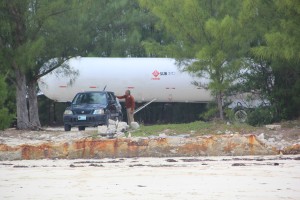
Our first Caribbean provisioning experiences unrolled in Bimini in the Bahamas – a series of three islands with 2,000 inhabitants about fifty miles east of Miami. When we found ourselves in need of gas for our propane stove, we asked around at the marina and were told, “Go talk to the woman at the yellow house. She’ll take you to find Frederick at the liquor store in the blue house down the street. Frederick will take you to get propane.”
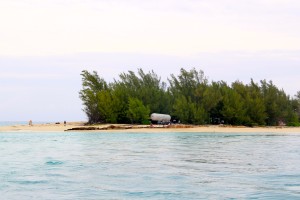
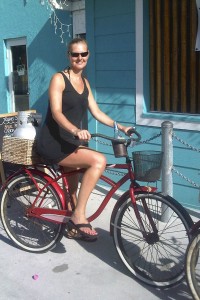
When we found Frederick he said, “Follow me to the truck [illegally] parked [on private property] where the road ends down on the point behind the pine trees.” We looked both ways, and tried to hurry off behind Frederick to the clandestine source of bootleg propane. Frederick was by far the largest islander I’d yet come across, and his slow waddle did not belie the contraband nature of the transaction we’re about to conduct. I was nearly ready to embrace a macrobiotic diet that would absolve the need for propane when Frederick got into a pickup truck and took us down to the truck. For $10, we had a full propane tank, and our first provisioning story of many.
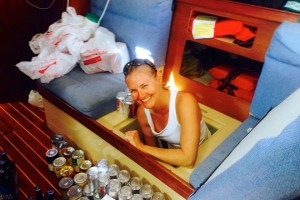
The Bahamas were a wasteland when it came to food and drink. Everything eaten on island other than locally caught fish is shipped in from Miami, first to Freeport or Nassau, then to the off-islands on once-a-week mail boats. If you aren’t either at the dock to meet the boat, or first in line at the store on the day the boat arrives, you will not be getting any fresh produce or dairy. What produce we could find in the coolers and on the shelves was badly bruised, well past ripe, and often freezer burned. And there was a healthy three hundred percent markup over Miami prices. Beer was at least U$S55 per case, barely palatable wine was at least U$S15 per bottle, but thankfully rum was relatively cheap. We learned to drink rum.
 On Moore’s Island in the central Bahamas, we went to five different stores looking for lettuce. I wasn’t looking for organic kale, or hydroponically grown spinach, or even frisée; after a few weeks in the Bahamas, I knew the best I could hope for was a slightly browning head of iceberg lettuce. After traipsing across the entirety of Moore’s Island in the midday sun, we found exactly one half of a head of badly browned cabbage. Luckily Moore’s Island was flush with beer, so at every store we had picked up a pair of roadies, and by the time we made it to the last store, and were served “Bush Crack Special Bahamian Beer” with a drawing of a very large-clawed rooster on the can, we’d forgotten about the lettuce.
On Moore’s Island in the central Bahamas, we went to five different stores looking for lettuce. I wasn’t looking for organic kale, or hydroponically grown spinach, or even frisée; after a few weeks in the Bahamas, I knew the best I could hope for was a slightly browning head of iceberg lettuce. After traipsing across the entirety of Moore’s Island in the midday sun, we found exactly one half of a head of badly browned cabbage. Luckily Moore’s Island was flush with beer, so at every store we had picked up a pair of roadies, and by the time we made it to the last store, and were served “Bush Crack Special Bahamian Beer” with a drawing of a very large-clawed rooster on the can, we’d forgotten about the lettuce.

On Crooked Island, where we were stuck for a few days waiting for the wind and seas to settle, we were told that there would be no eggs for sale until the mail boat could make it down from Nassau in a week or so after the weather abated. As a vegetarian living in a food wasteland, I survived on eggs and protein powder. No eggs for a week?! On Mayaguana Island, where we were stuck for a week again waiting for the wind and seas to settle, we were told that there would be no beer for sale again until the mail boat could make it. Mayaguana had all of one dusty, windswept crossroad with two small sundry stores, a boarded up bar, and a social services building on whose front porch you could pirate some wifi. We spent a week squatting on that front porch, pouring over grib files, hoping the wind would settle so we could either get some beer or sail to fresher pastures. The wind subsided and we sailed straight for a Presidente beer distributor in the Dominican Republic.
Things got much easier south of the Bahamas, but provisioning on island is never easy. There’s no Amazon Prime or Fresh Direct; there’s not even a Google Map with the stores’ locations properly marked. As soon as you make landfall, you take your dinghy to the nearest dinghy dock, you ask the first local you find where you can get some groceries, and you pray they have half of the things on your list. Your list contains broad categories like “fruit” and “vegetables”, because you know you’ll take whatever they’ve got and make do. My lists even have a column for those long shots just in case: tahini, miso paste, sesame seeds, Japanese tonkatsu sauce and Mexican ranchera sauce.
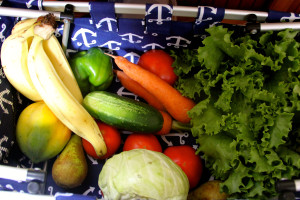
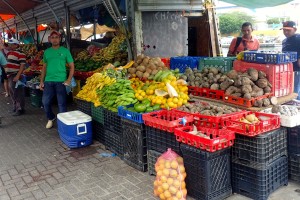
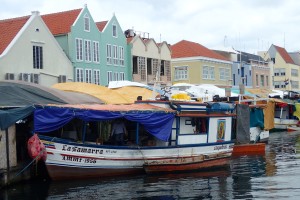
Farmers markets on the Eastern Caribbean islands south of Guadeloupe are a lifeline – fresh, organic, inexpensive produce sold by women who share recipes for obscure vegetables and suggest you need more christophene and seasoning peppers to keep your man happy. If only we had a drying oven, I would buy them out of tomatoes and mangoes in the summer, just to savor those flavors once rainy season hits. When the first tomatoes hit the farmers market in October in Grenada, I gladly paid three times what I’d paid just a few months before. I remember the sad tomatoes available year round in New York groceries – shipped in from some far away place, bruised from the trip, usually half unripe green and half overripe brown – and I know I would choose a season without tomatoes every time, just to bite into the first tomato of the season at an island farmers market, teeth piercing the firm outside, juice and seeds running down my face, flavor bursting. This is eating.

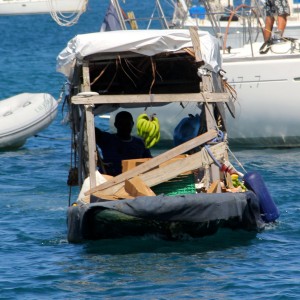
On a few islands, entrepreneurial men bring the product directly to you, on whatever they can find that floats. In Dominica, Sheldon sells mangoes off of his old windsurfer he paddles with a broken oar. In St Lucia, a gentleman sells an entire farmers market worth of produce in a floating ramshackle shack. In the French islands, young women motor out with piping hot baguettes in the morning. Oh oui avec plaisir.
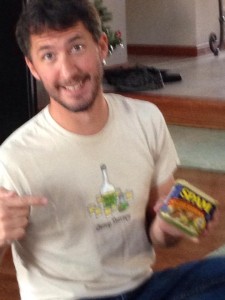
The flip side of fresh farmers markets, sadly, is island grocery stores. Island grocery store aisles are full of the most economical choice for a small economy far from industrial centers: canned food. And most cruisers’ sailboats’ holds are full of the most feasible food choice for a vessel that has a small refrigerator and may be far from grocery stores for weeks at a time: canned food. I quickly learned what is edible (canned tuna) and what is not (canned asparagus). I learned to supplement fresh salad ingredients with canned food (beets, corn, artichoke hearts, hearts of palm, olives and sundried tomatoes). I’ve even learned to eat canned tofu. (My vegetarian organic New York friends are trying not to vomit right now.) And thank goodness for canned chili. We have not broken into the canned Spam that Jason’s dad stuffs in our stocking every Christmas, “Just in case.”
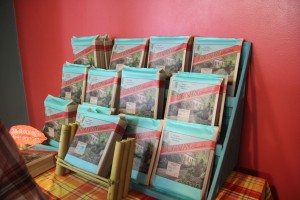
Most island stores have a decent selection of canned foods, and, as long as you’re not in the Dutch islands, the labels are decipherable. Don’t try to buy tortilla chips and salsa in the French islands, or wine and cheese in the formerly British islands. Stock up on rum in the Dominican Republic and St Croix. Stock up on beer in the Dominican Republic (Presidente), Martinique (Lorraine) and the Dutch islands (Bright). Stock up on chocolate in Grenada. And of course don’t leave the French islands without a hold or two filled with French wine and the fridge topped off with French cheese. That is the biggest treat of provisioning in the Eastern Caribbean.


What we can’t get on island, we ship to our “mule” friends visiting from the states, who somehow whisk it past customs. And every time we go back to the states to visit, Jason brings a suitcase full of boat parts, and I bring a suitcase full of Kewpie mayonnaise, Dona Maria mole, Herdez salsa verde and Cherry Republic chipotle salsa. Amazon Prime delivers to Puerto Rico and the US Virgin Islands, and you can get just about anything shipped into St Maarten. It’s the little things.
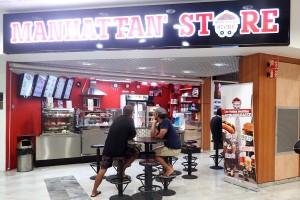
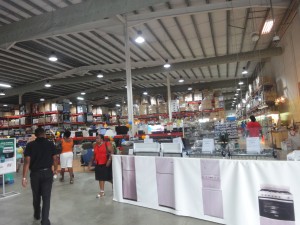

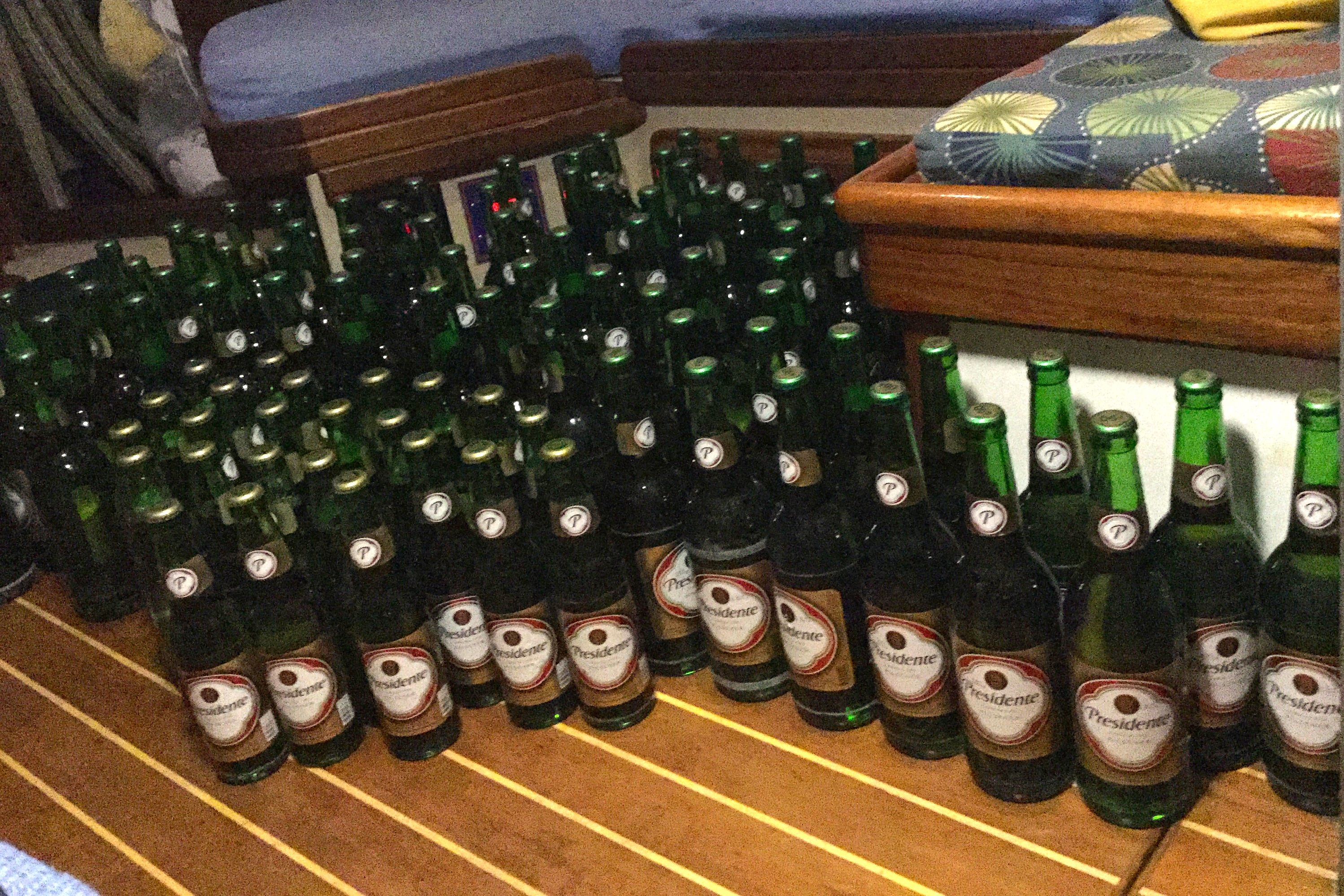
Do you not eat fresh seafood?
Stay tuned for an upcoming blog entitled “Becoming a Pescatarian”.
It is exactly what it is. Thanks for writing it down and congratulations for the blog … that I have not set-up yet – shame on me. Fair winds
Songhui & Dominique
S/V Viva Opua, New Zealand
Thanks for reading. We have a little more free time at our slower pace than you. ;)